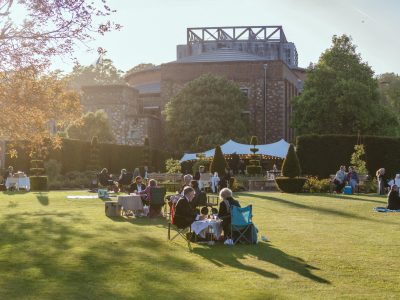
Musical highlights
Explore the musical moments to look out for in Il barbiere di Siviglia
Una voce poco fa
Captivated by the voice of her suitor “Lindoro”, Rosina resolves to meet him in this, her delightful first aria. Rossini uses the traditional structure of the aria – two sections, the first slow and the second fast – to reflect the two different sides of Rosina’s character.
The measured, formal orchestral introduction gives little sense of the musical excitement to come. It sets the tone for Rosina’s opening music, in all its elegant, poised prettiness and florid decoration. But as the second section progresses Rosina begins to show her true colours (the mood change pivots, crucially on the word ‘ma’ – ‘but’), setting quiet modesty aside in favour of a much more extrovert, assertive display of feminine determination.
The opening of the second section of the aria (‘Io sono docile’) features a solo flute, whose airy, graceful tone echoes and emphasises Rosina’s light, girlish character. The aria is a typical example of a ‘Rossini crescendo’ in which music repeats the same phrases, gradually getting both faster and louder until it reaches a thrilling climax.
Zitti, zitti, piano, piano
This trio for Almaviva, Figaro and Rosina captures the opera’s cheeky, playful spirit.
The trio’s sense of suppressed urgency, of excitement bubbling just below the surface, is generated by short notes, hissed out almost like a musical whisper.
Although the pace is slow – sustaining the illusion of control, order – the way the singers’ phrases all crowd in on one another, following quick on each other’s heels, gives the ensemble a real sense of haste and fluster.
The sudden shifts of volume from very quiet to very loud emphasises the exaggerated, pantomime character of the situation.











